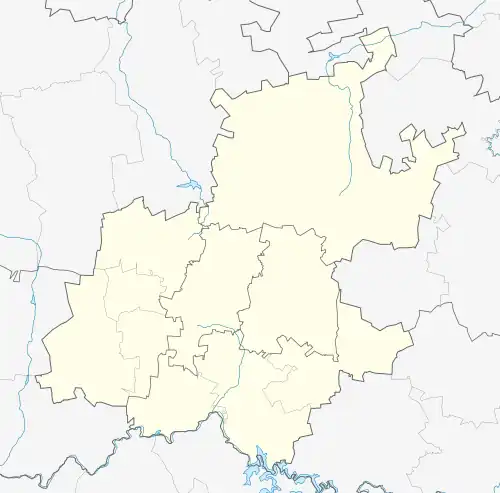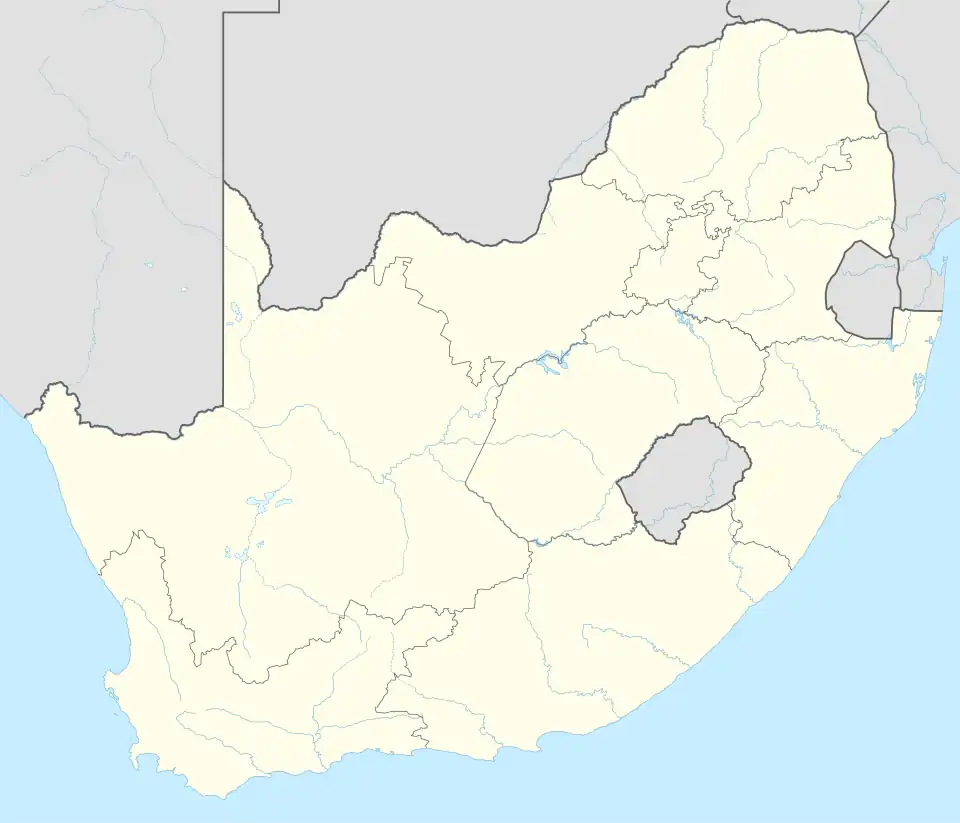Lawley, South Africa
Lawley | |
|---|---|
 Lawley  Lawley | |
| Coordinates: 26°22′52″S 27°48′29″E / 26.381°S 27.808°E / -26.381; 27.808 | |
| Country | South Africa |
| Province | Gauteng |
| Municipality | City of Johannesburg |
| Government | |
| • Councillor | Sakhile Tshenge |
| Area | |
• Total | 6.09 km2 (2.35 sq mi) |
| Population (2011)[1] | |
• Total | 33,136 |
| • Density | 5,400/km2 (14,000/sq mi) |
| Racial makeup (2011) | |
| • Black African | 95.3% |
| • Coloured | 4.1% |
| • Indian/Asian | 0.2% |
| • White | 0.3% |
| • Other | 0.2% |
| First languages (2011) | |
| • Zulu | 28.8% |
| • Sotho | 20.7% |
| • Tsonga | 13.7% |
| • Xhosa | 8.9% |
| • Other | 28.0% |
| Time zone | UTC+2 (SAST) |
| Postal code (street) | 1830 |
| PO box | 1824 |
Lawley is a township in the Gauteng province of South Africa and is some 8 km south of Lenasia. Named after Sir Arthur Lawley, Lieutenant-Governor of Transvaal from 1902 to 1906, when he became Governor of Madras.[2]
References
- ^ a b c d "Main Place Lawley". Census 2011.
- ^ "Dictionary of Southern African Place Names (Public Domain)". Human Science Research Council. p. 274.
Seat: Johannesburg | |||||||||||||||||||||||||||||||||||||||||||
| Topics |
| ||||||||||||||||||||||||||||||||||||||||||
| Suburbs |
| ||||||||||||||||||||||||||||||||||||||||||
This article is issued from Wikipedia. The text is available under Creative Commons Attribution-Share Alike 4.0 unless otherwise noted. Additional terms may apply for the media files.